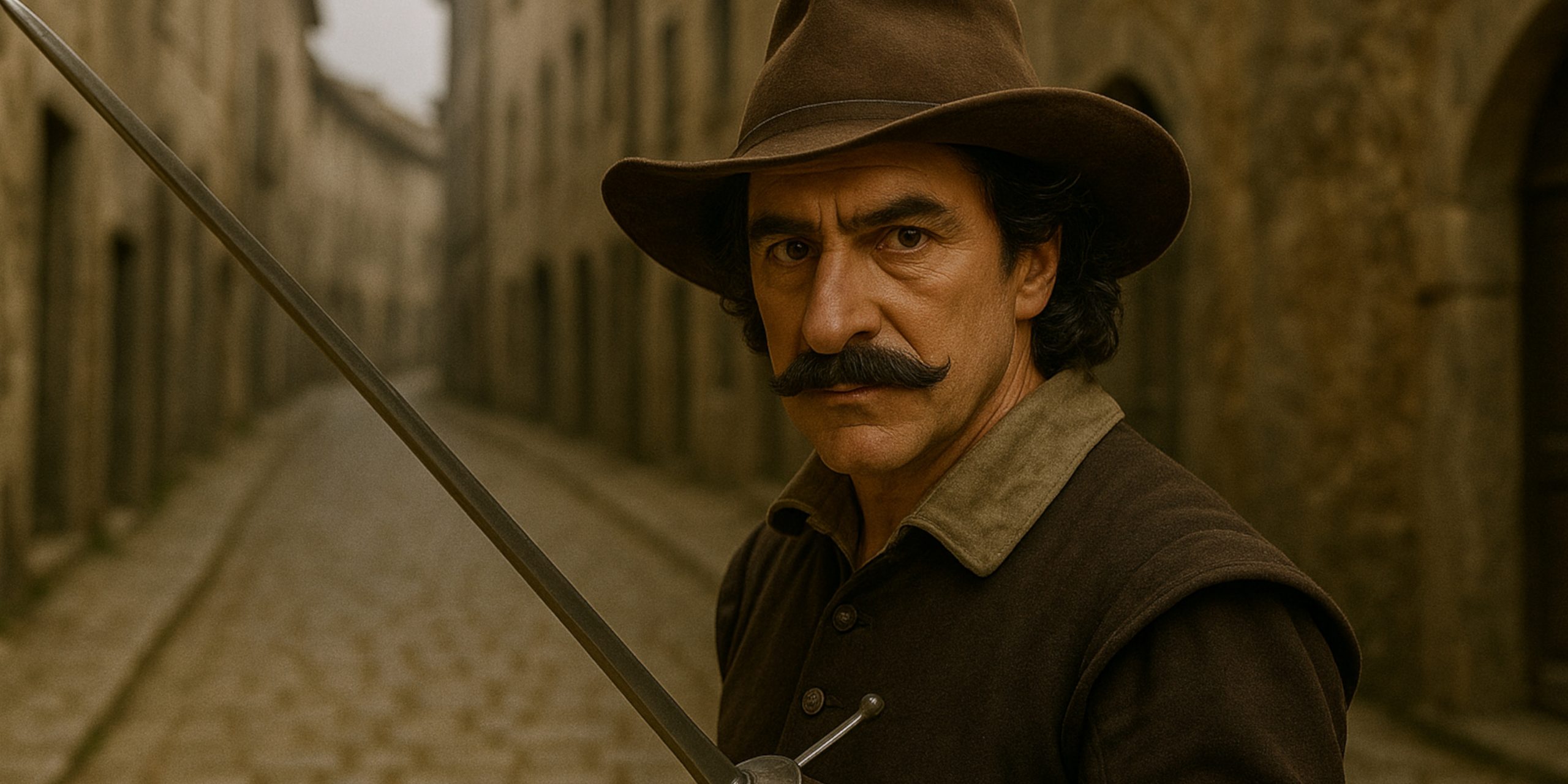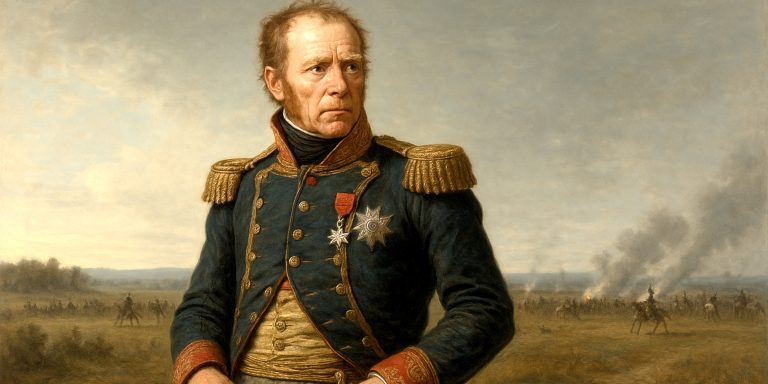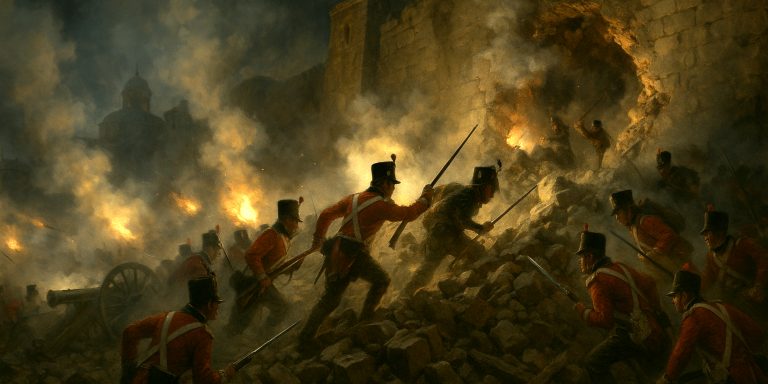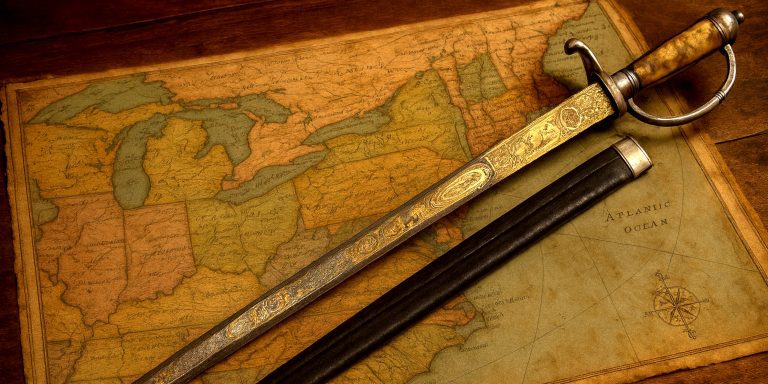
Cyrano de Bergerac is one of those figures who straddles the line between history and legend. A 17th-century French nobleman, soldier, satirist, and occasional science-fiction visionary, he is remembered as much for his supposed monumental nose as for his sharp wit and sharper blade. Popular imagination has been dominated by Edmond Rostand’s play of 1897, which made him into the archetypal tragic romantic hero. The historical Cyrano, however, was less romantic, and more often found battering his way through duels and arguments.
Early Life
Hercule-Savinien de Cyrano de Bergerac was born in 1619, probably in Paris, though the family name ties him to Bergerac. His family belonged to the lesser nobility. As a youth he studied under the philosopher Pierre Gassendi, which gave him a taste for literature and philosophy. By all accounts he was rebellious, irreverent, and rarely capable of letting an insult pass unanswered.
Soldier and Duellist
Cyrano joined the French army during the 1630s, serving in campaigns against Spain. He was brave to the point of lunacy, often throwing himself into combat with more energy than discipline. But it was outside the battlefield, in the world of duels and street fights, that his reputation really took shape.
The Duelling Culture of Seventeenth-Century France
Paris at the time was thick with duels. Honour was a currency and offence was taken at the drop of a hat. Cyrano thrived in this climate. A quick tongue could escalate quarrels into combat, and Cyrano’s tongue was among the quickest.
Famous Duelling Tales
- The Hundred-Man Brawl: One of the most enduring tales is that Cyrano once fought off a gang of one hundred hired thugs in a single night near the Porte de Nesle, armed only with his sword. In reality, he probably fought a handful, but the story grew with each retelling until he became the one-man army of Parisian legend.
- Defender of Poetry: Cyrano is said to have duelled a man who insulted a fellow poet during a public reading. Rather than respond with an essay, he pulled steel, proving that in his world literature and violence were not mutually exclusive.
- The Nose as a Trigger: Accounts suggest Cyrano often used mockery of his nose as a spark for duels. Unlike Rostand’s sentimental Cyrano, who was wounded by comments, the real one seems to have relished baiting people into fights where he could display his skill.
Style of Fighting
Contemporary descriptions suggest Cyrano favoured aggression over restraint. He was no fencing-school purist but a scrapper with an improvisational edge. His reputation spread quickly enough that few were eager to cross him, though plenty still did.
Writer and Thinker
Behind the blade was a formidable pen. Cyrano produced plays, satires, and, most famously, his proto-science fiction works The States and Empires of the Moon and …of the Sun. These imagined voyages to celestial worlds, filled with flying machines and alien societies. Long before Jules Verne, Cyrano was already picturing humanity breaking Earth’s shackles.
Death and Legacy
Cyrano died in 1655, at just 36. Accounts vary: some say he was struck by a falling beam, others that he succumbed to illness. What is clear is that his death cut short a career of restless brilliance.
In life, his literary works were admired by a small circle but never widely popular. Rostand’s romanticised play created a heroic caricature that overshadowed the historical figure. The result is a dual legacy: Cyrano as the lover who never confessed, and Cyrano as the duellist who cut his way through Paris with steel and sarcasm.
Myth vs Reality
- The Nose: Real, large, but not grotesque. Rostand made it monumental.
- The Lover: The balcony-scene hero is a literary invention.
- The Duellist: True enough – he fought constantly and became a minor legend in Paris for his brawls.
- The Writer: Undeniably, and ahead of his time.
Legacy and Takeaway
Cyrano de Bergerac remains fascinating because he embodies contradiction. He was at once a dreamer of space travel and a man who solved insults with steel. His duels have passed into half-myth, half-fact, but they show a restless spirit unwilling to be silenced.
If nothing else, he is proof that in 17th-century France one could be both a philosopher of the stars and a swordsman in the gutter.
Watch a clip from the 1990 Movie:



